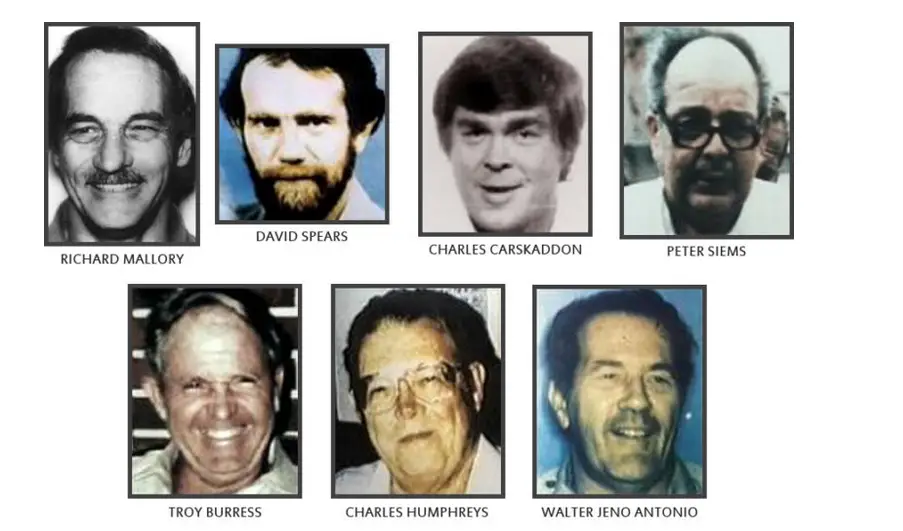This post and accompanying video discuss psychopathy, what it is, and how it relates to the case of convicted serial killer Aileen Wuornos. I also go through the psychopathy test PCL-R (Psychopathy Checklist Revised), which is a checklist developed by psychologist Robert Hare.
Table of Contents
What is Psychopathy?
The term “psychopath” is fairly widespread and used often in the popular media. Think, for example of the movie “American Psycho”, where Christian Bale plays an investment banker who seems to be very successful and who has a life that appears to be very hip and trendy, but who secretly has a second life full of assault and cold-blooded murder.

Psychopathy is a personality disorder and has several characteristics, personality traits, or criteria:
- First: A lack of empathy for other people, meaning having little regard for the feelings and emotions of others, and not having close bonds with other people
- Second: Low guilt and remorse
- Third: Fearlessness and they’re not responsive to punishment
Psychopathy is associated with the most severe and chronic antisocial behavior.
The causes for psychopathy have been studied, and what’s been found is that genes and dysfunction in certain brain regions seem to have a considerable influence on psychopathy. But there are also social factors, such as having had parents who used harsh parenting techniques, that play a role.

The Hare Psychopathy Test and Checklist
Canadian psychologist Robert Hare has developed a Psychopathy Checklist, which is called the PCL-R: Psychopathy Checklist Revised. You can see a copy of that list below.

The Psychopathy Checklist contains 20 items. For each item, one assesses whether that characteristic is not present, somewhat present, or definitely present in an individual. For not present, one would enter a score of 0, for somewhat present one would enter a score of 1 and for definitely present a score of 2. So for example, the first item is glibness, superficial charm. If this is definitely present in a person, the score would be 2. If it’s not present, a 0 and somewhat present, a 1.
The same thing can be done with the second characteristic, egocentricity: One enters the score, and then continues with the entire list of characteristics, such as proneness to boredom here, pathological lying and deception, lack of sincerity, lack of remorse or guilt, etc.
When one has completed all items, one then sums up the responses across all 20 items. So in that way the maximum score across all items would be 40 (because the maximum score per item is 2, and then times 20 items, this makes 40).
People who score more than 25 to 30 points (25 in the UK and 30 in the US) are said to display psychopathy.
The Case of Aileen Wuornos, convicted female serial killer
One of the well-known real-life examples of someone for whom the PCL-R was completed is Aileen Wuornos. She was a serial killer, who was the main character in the movie “Monster”, where she was played by Charlize Theron.

Her story has been analyzed by scientists, so let’s talk a little bit about what they found out, so that her pathway into becoming a serial killer becomes clearer.
She was born in Michigan, and her background was one of significant deprivation. Her parents were two teenagers who got divorced around the time she was born. Her father was absent; he was an alcoholic who was sentenced for raping a young girl, and he committed suicide in prison. Her mother was also an alcoholic and she left her baby, Aileen Wuornos, with her grandparents, who were also alcoholic and emotionally and physically abusive.
Already when she was a child, she started to show behavioral problems, such as fighting, stealing, and setting fires. She also had a low IQ. She became pregnant at age 13 and was forced to give up her son for adoption. Then, when she became an adolescent, she started drinking, running away, using drugs, panhandling and prostituting herself.
As a prostitute, she was sexually and physically abused by her clients, and was arrested for a range of crimes during that time. She also tried to commit suicide multiple times and had many short-term relationships
At age 34, Wuornos killed seven men over a 1-year period. Her victims were all middle-aged men, and they were all killed with a firearm. Afterwards, Wuornos said that she killed them because she wanted to rob them and that she wanted to eliminate them as potential witnesses. She was executed by lethal injection in 2002.

Aileen Wuornos’s Score on the Psychopathy Test
Three experts scored Wuornos on the PCL-R checklist that you just saw, and they reached the conclusion that she scored 32 out of 40 points.
She also met the criteria for antisocial personality disorder, which is characterized by a lack of regard for moral values and for the feelings of other people. Also, she was diagnosed with borderline personality disorder, which is a mental disorder where people have extreme variations in mood, emotions and behavior.

Regarding the factors that may have contributed to the causes of the diagnosis of psychopathy and mental disorders in the case of Wuornos, the psychiatrists who studied her case think that these diagnoses were likely caused by her traumatic childhood and the physical and sexual abuse that she experienced, which can disrupt normal human development. Also, they concluded that there may have been a genetic influence towards violence that she inherited from her father and that that genes have contributed to her choices to murder others.
In sum, this case study shows how psychopathy can be related to committing serious violence crimes, in this case murder.
Resources:
Frick, P. J. (2009). Extending the construct of psychopathy to youth: Implications for understanding, diagnosing, and treating antisocial children and adolescents. Canadian Journal of Psychiatry/Revue Canadienne de Psychiatrie, 31(12), 803.
Hare, R. D. (2003). The Hare Psychopathy Checklist-Revised, 2nd edition. Toronto, ON: Multi-Health Systems. You can download a copy here.
Myers, W. C., Gooch, E., & Meloy, J. R. (2005). The role of psychopathy and sexuality in a female serial killer. Journal of Forensic Science, 50(3), 1-6.
